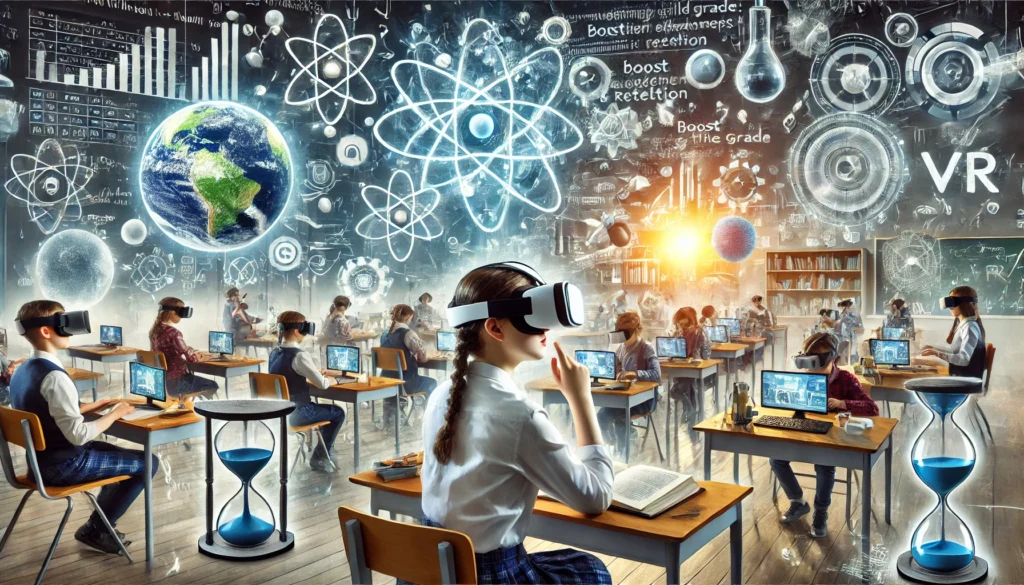Making the Grade with VR: How Educational Headsets Can Boost Student Engagement and Retention
In recent years, virtual reality (VR) technology has been revolutionizing the way we learn. With its immersive and interactive nature, VR has the power to grab students’ attention and increase their engagement in the learning process. As a result, educational headsets are becoming an increasingly popular tool in schools and educational institutions worldwide.
Why VR in Education?
VR technology offers a wide range of benefits for students, including increased engagement, improved retention, and enhanced understanding. Here are some of the key advantages of using VR in education:
-
- Increased Engagement: VR has the ability to capture students’ attention and keep them engaged in the learning process. The immersive nature of VR makes it an effective tool for breaking up monotony and keeping students interested in what they’re learning.
-
- Improved Retention: By providing a more interactive and engaging learning experience, VR can help students retain information more effectively. Research has shown that students who learn through VR remember more information and retain it for longer.
-
- Enhanced Understanding: VR’s interactive nature allows students to explore complex concepts in a way that would be difficult or impossible through traditional teaching methods. This can lead to a deeper understanding of the material and improved academic performance.
How VR is Boosting Student Engagement and Retention
Several educational institutions and organizations are already reaping the benefits of VR technology. Here are some examples of how VR is being used to boost student engagement and retention:
-
- Virtual Field Trips: With VR, students can take virtual field trips to places they would never be able to visit in person. This has the potential to broaden their perspectives and provide a more engaging and interactive learning experience.
-
- Simulations and Interactive Lessons: VR simulations allow students to engage with complex concepts in a more interactive and immersive way. This can be particularly effective for subjects like science, technology, engineering, and mathematics (STEM).
-
- Virtual Labs: Virtual labs allow students to conduct experiments and investigations in a virtual environment, reducing the need for physical equipment and providing a more cost-effective and convenient way to learn.
Challenges and Concerns
While the potential benefits of VR in education are substantial, there are certainly some challenges and concerns to be aware of. Here are a few:
-
- Cost: High-quality VR headsets and educational content can be expensive, which may be a barrier for some schools or educational institutions.
-
- Accessibility: VR technology is not yet widely available to all students, which can create equality concerns.
-
- Technical Issues: VR systems can be prone to technical issues, such as lag or connectivity problems, which can disrupt the learning experience.
Conclusion
In conclusion, VR technology has the potential to revolutionize the way we learn. By providing an immersive and interactive experience, VR can boost student engagement and retention, leading to improved academic performance and a more effective education system. While there are certainly challenges and concerns to be aware of, the potential benefits of VR in education make it an exciting and valuable tool for schools and educational institutions to consider.
Recommendations for EdTech Professionals
If you’re an EdTech professional looking to implement VR in your educational setting, here are a few recommendations:
-
- Start Small: Begin with a small pilot program or proof of concept to gauge the effectiveness of VR in your specific setting.
-
- Choose the Right Content: Select high-quality educational content that aligns with your curriculum and learning objectives.
-
- Develop a Marketing and Adoption Strategy: Plan a comprehensive marketing and adoption strategy to ensure widespread buy-in and a smooth rollout.
By embracing VR technology, educators can create a more engaging and effective learning experience for their students, ultimately leading to better academic outcomes and a brighter future for all.
